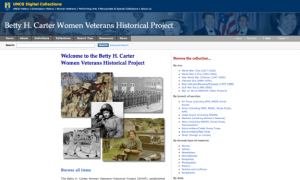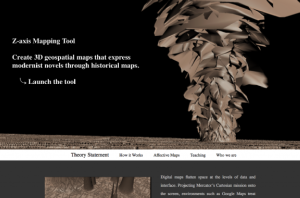 |
September 23, 2016 Volume 22, Number 37 |
Research and Education |
General Interest |
Network Tools |
In the News |
Research and EducationBack to Top | |
 |
|
 |
|
 |
|
 |
|
 |
|
 |
|
 |
|
 |
|
General InterestBack to Top | |
 |
|
 |
|
 |
|
 |
|
 |
|
 |
|
 |
|
 |
|
Network ToolsBack to Top | |
 |
|
 |
|
In the NewsBack to Top | |
A 101 Year Old Endeavor, Realized at Last: Smithsonian Institution's National Museum of African American History and Culture Opens Saturday | |
|
The National Museum of African American History and Culture: I, Too, Sing America Family Heirloom, National Treasure: Rare Photos Show Black Civil War Soldiers How a Museum Captures African American History First look at the Smithsonian's museum of African American History - in pictures Full interview: Lonnie Bunch, director of Smithsonian African American History Museum National Museum of African American History and Culture In 1915, a group of black Civil War veterans launched a campaign to create a museum dedicated to the contributions of black Americans throughout United States History. Activists continued to advocate for the creation of such a museum until 2003, when President George W. Bush authorized the construction of the Smithsonian Institution's National Museum of African American History and Culture. This coming Saturday, September 24, 2016, the museum will open to the public. The museum will exhibit 400 years of black American history in a 400,000 square foot building designed by Tanzanian-born British architect, David Adjaye. The museum is intended to be explored from the ground-up, as items are arranged chronologically from the seventeenth century through the present. Unlike with other museums, the Smithsonian did not have an initial collection that formed the base of the NMAAHC's collection. In fact, museum representatives visited fifteen U.S. cities to encourage individuals across the nation to donate items. These donations - which came from descendents of remarkable black Americans, both famous and unsung; descendents of slave owners; and descendents of a number of Americans whose lives were linked to black Americans in a myriad of ways - were crucial to building the museum's collection. Over 3,500 items will be exhibited when the museum opens Saturday. [MMB] The first link will take readers to a New York Times feature that exhibits photographs of items from the museum's collection and highlights stories behind some of the museum's donations. Meanwhile, the second link takes readers to a story by NPR's Cheryl Corley that focuses on Aneita Atwood Gates's decision to donate her great-grandfather's collection of photographs of black Union Civil War Soldier to the NMAAHC. Gates's great-grandfather, William A. Pickett, served as captain for a black Union regiment. Moving along, those interested in learning more about the remarkable and unique architecture of the new museum will want to check out the next two links: an Atlantic City Lab feature by Kriston Capps followed by a collection of museum photographs published in The Guardian. The fifth link takes readers to an insightful Newshour interview with the museum's director, Lonnie Bunch. Finally, readers will find the official webpage of the NMAAHC, which highlights remarkable online exhibits and numerous digitized items, including photographs, drawings, magazines and much more. | |





